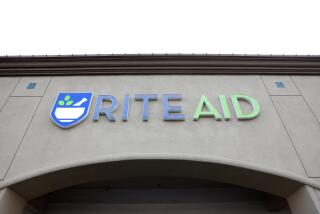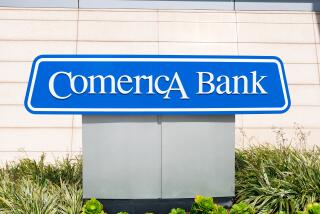Cost of Homefed Bailout Could Hit $4.5 Billion : Thrifts: The estimate is based on the cost of selling off institutions of similar size, the OTS chief says.
- Share via
The nation’s top thrift regulator said Tuesday in Washington that the failure of San Diego-based Homefed Bank is likely to cost taxpayers more than $2 billion, and the costs continue to mount daily.
The statement by T. Timothy Ryan Jr., director of the Office of Thrift Supervision, before a House banking subcommittee, suggests that the ultimate price tag of the collapse will greatly exceed the $2.6-billion cost of Lincoln Savings & Loan, the most expensive failure to date.
The “historical average resolution cost” of a thrift of Homefed’s size works out to $4.5 billion, Ryan said, while cautioning that “it would be a mistake to now assume that the cost of resolving Homefed” would go that high.
He also told the subcommittee on general oversight and investigations that the thrift suffered a major run on deposits in the week after the July 6 seizure by the government. Ryan said the thrift lost $500 million in deposits that week, weakening the thrift and increasing the cost of its ultimate disposal by the Resolution Trust Corp.
Homefed was the nation’s eighth-largest thrift with $13.5 billion in assets and 206 branches when it was brought down by bad real estate loans. It is the largest U.S. savings and loan institution ever to collapse.
In his testimony, Ryan appealed to Congress to approve more funding for the RTC so that it could reinstate the Accelerated Resolution Program. The program allows the OTS to defer seizure of troubled thrifts until new capital or buyers can be attracted. Ryan claims that ARP can substantially lower the cost of resolving crippled S&Ls;
Ryan said the program, in which Homefed was enrolled before its seizure, made economic sense because it kept professional management in place up until the time that troubled thrifts were sold in whole or in pieces to bidders. By contrast, outright conservatorship often leads to dramatic losses of deposits and of management personnel, he said.
Homefed and several other thrifts were removed from ARP after Congress failed to appropriate additional bailout funds to the RTC in June. RTC, which has already spent $88 billion and was seeking $42 billion more, ran out of funds to resolve institutions on April 1.
Based on past ARP resolutions, Ryan said the cost of cleaning up Homefed was projected to be about $2 billion had the thrift remained in the program. But using the formula for past RTC conservatorships, the cost could go as high as $4.5 billion.
The reason in part is that the value of Homefed as a franchise to prospective bidders has been reduced because of the deposit run-off, staff attrition and negative publicity, Ryan said.
Ryan said that with no additional funding for the RTC and restoration of ARP the costs of resolving Homefed will mount. “Homefed will languish in government conservatorship, unable to be resolved, losing value and competing with private sector financial institutions for funds,” he said. “No one can argue that the scenario saves money for U.S. taxpayers.”
More to Read
Inside the business of entertainment
The Wide Shot brings you news, analysis and insights on everything from streaming wars to production — and what it all means for the future.
You may occasionally receive promotional content from the Los Angeles Times.










